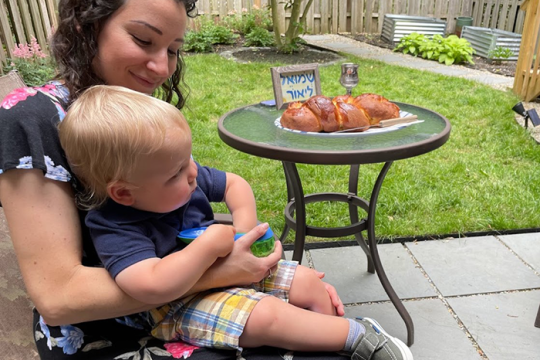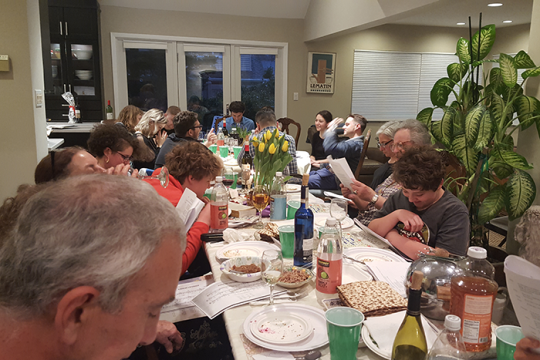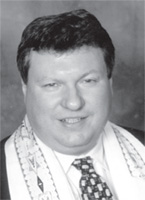
When new characters in the long-running British science fiction show, “Doctor Who,” step into the show’s time machine, TARDIS, they generally gasp and gape and say: It’s bigger on the inside than it looks from the outside!” Indeed, the innocent looking, iconic big blue police box transcends ordinary experience; it is a portal that can take you anywhere in time and space.
I have been a fan of the show for many years, but until recently, I did not really understand what it felt like to travel on the TARDIS.
It was the second night of shiva for my father, the evening gathering held in a home of a mourner. It is an amazing tradition, in fact. The community rallies, brings food (so much food!), but, more than that, they bring simple “presence” at a time when we need it most. (Because we no longer have our own home in the Washington, D.C., area, we were welcomed into the homes of close friends, where so many people – my father’s colleagues, individuals from my former congregation, and friends from the area – came to comfort and support us.)
I have long believed – and observed – that Jewish rituals around death and mourning, with specific acts and directed timetables of deliberately diminishing intensity, mirror the insights of modern psychology more closely, perhaps, than any other area of life. We were deeply grateful to our community – both in greater Washington, D.C., and on St. Thomas, where, upon returning home, we held a final night of shiva, including a minyan service.
But something happened on that second night.
Having learned from a failed attempt to lead the minyan service myself following the death of my mother, I made no attempt to do so in Washington. And, though there were many clergy colleagues present each evening, I was touched and grateful and proud that the services all were led by lay people from my former congregation – who always insist on helping in this way at a house of mourning.
To have a trained cadre of congregants who can model what “doing Jewish” is for one another, without being dependent on a rabbi or cantor to “do it” for them, makes me extremely proud. To have these devoted leaders step in and take on this role is not doing my job “instead” of me. Rather, it demonstrates one of the ways I have fulfilled my rabbinic role in the healthiest possible way.
As I looked around the room a few minutes into the rhythm and flow of the Hebrew chant and occasional English readings, I suddenly realized that I was surrounded not only by people who had lost loved ones – a woman whose sister I had buried, a man whose wife’s funeral I had attended – but also, hovering in a translucent mist, their parents and partners, siblings and cousins, all of whom were now present for me and my family.
In that moment, I was transported. I fell through the crack of time and space as one shiva minyan blended and blurred – becoming every shiva minyan. I was transformed, too, as one act of kindness intertwined with every such act. Of course, there is power in continuity and the moment occurred, in part, because I was within a community I knew well, in a place where I’d been present for many of its members over a period of time.
But such moments can happen, too, in a place that is new.
That first erev Shabbat back on St. Thomas, as I read the names for yahrzeit and Kaddish, before I added my father’s name to the others, names on the list jumped out at me, helping to fill the sanctuary, even if only for a moment, with an ambassador, a governor, and a rabbinic predecessor who had served the community for more than 50 years.
Reinforced that evening, as it had been in Maryland a few days earlier, was the idea that services are only partially about God, theology, and belief. The rest is about community and the act of coming together, which can create a latent power and possibility, a rare mystical moment that can change lives. When a single gathering becomes every gathering, when one space becomes all space, when here and there and now and then become blended and mingled and mixed, anything is possible.
In the midst of my sadness and loss, the services offered a glimpse of love and overwhelming support, which can be neither staged nor forced. Indeed, a real community is like the TARDIS, “It’s bigger on the inside than you can possibly guess from looking at it from the outside.”
To learn more about Jewish mourning customs, see “What Do You Know About Burial and Shiva?”
Related Posts

Harnessing the Power of our Mothers Around the Seder Table

Melding Tradition and Innovation: Our Interfaith Toddler Naming Ceremony


